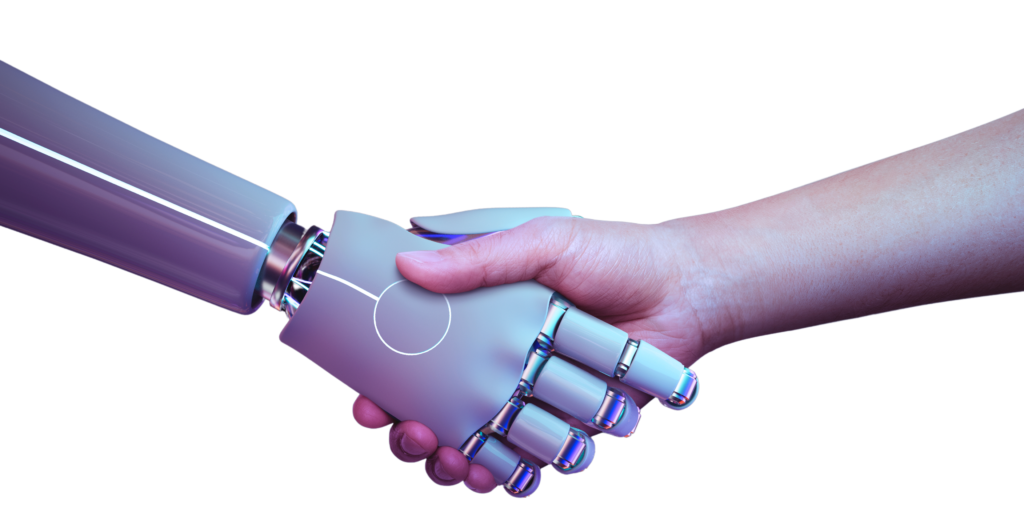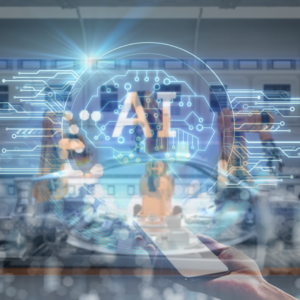How to use LLM, ML and AI in Manufacturing
Unfolding the Future of Manufacturing: A Journey Through LLM, AI, and Opportunities
In a world where technology evolves at an unprecedented pace, Large Language Models (LLMs), Artificial Intelligence (AI), and Machine Learning (ML) have emerged as transformative forces, revolutionizing the way we work and reshaping the manufacturing landscape. These technological marvels are pushing the boundaries of what is possible, unlocking untapped potential for innovation and efficiency in manufacturing organizations.
LLMs are a form of AI designed to process, understand, and generate human-like text, allowing them to comprehend context and respond intelligently to a wide range of inquiries. AI, a broader concept, refers to the development of machines and algorithms that can perform tasks that typically require human intelligence. ML, a subset of AI, enables computers to learn from data and improve their performance over time without being explicitly programmed.
In this blog, we will delve into the fascinating world of LLMs, AI, and ML, exploring their capabilities, the challenges they present, their current applications, and the myriad benefits they bring to the manufacturing sector. Through a narrative of change management and continuous improvement, we aim to provide a comprehensive understanding of the obstacles and opportunities that await manufacturers as they embrace the transformative power of LLMs, AI, and ML.
Demystifying LLM and AI: The Engine of Modern Manufacturing
To truly grasp the influence of LLMs, AI, and ML on the manufacturing industry, we must first delve into the essence of these groundbreaking technologies and explore their inner workings. Large Language Models, like OpenAI’s GPT-4, represent a class of AI designed to process, interpret, and generate human-like text. Capable of discerning context and responding intelligently to a vast range of queries, these models redefine the possibilities of human-machine interaction in manufacturing environments, providing new ways to analyze data, communicate, and optimize processes.
Meanwhile, AI refers to the broader domain of creating machines and algorithms capable of performing tasks that have traditionally required human intelligence. Within the manufacturing sector, AI technologies can lead to significant advances in process automation, decision-making, and overall efficiency. A subset of AI, machine learning, empowers computers to learn from data and refine their performance over time, continually adapting and improving in response to changes in the manufacturing environment. In the context of manufacturing, AI technologies have the potential to revolutionize processes and reshape the industry.
Balancing the Scales: Harnessing the Benefits and Addressing the Threats of LLM and AI
The impact of LLM and AI on manufacturing is multifaceted, presenting both unparalleled opportunities and formidable challenges. As we wield these powerful tools, we must acknowledge and address the threats they pose while leveraging their benefits to propel manufacturing organizations to new heights.
Benefits:
- Automation of repetitive tasks: By automating mundane, repetitive tasks, LLM and AI liberate workers to concentrate on high-value, creative endeavors. In the manufacturing sector, this translates to increased productivity and the potential for enhanced innovation.
- Enhanced decision-making: By harnessing the power of AI-driven data analytics, organizations can make better-informed decisions that lead to improved resource allocation, reduced waste, and optimized outcomes. In manufacturing, this means minimizing errors and streamlining operations.
- Improved product quality: AI’s ability to detect defects and quality issues early in the production process can significantly reduce waste and elevate product quality. By implementing AI-driven inspection systems, manufacturers can surpass the capabilities of human inspectors and ensure that their products meet the highest standards.
- Reduced downtime: With predictive maintenance powered by AI, organizations can identify potential equipment failures before they occur, minimizing downtime and maintenance costs. This level of foresight allows manufacturing organizations to maintain a consistent output and optimize their operations.
Threats:
- Job displacement: As automation replaces certain tasks, workers may be displaced from their roles and face challenges adapting to new responsibilities. In manufacturing, this necessitates thoughtful planning and workforce development strategies to ensure a smooth transition.
- Privacy concerns: As AI and data-driven solutions become more prevalent, privacy concerns arise regarding the collection and storage of personal information. Manufacturing organizations must implement robust data privacy policies and practices to address these concerns.
- Ethical concerns: The use of AI in decision-making can result in biased outcomes if the underlying data used to train algorithms is biased or incomplete.
Manufacturing organizations must take a proactive approach to addressing these ethical concerns, ensuring that AI systems are developed and deployed responsibly, and that any potential biases are identified and mitigated.

The Present and the Future: Potential of LLM and AI in Manufacturing
LLM and AI have already started transforming various manufacturing processes, heralding a new era of innovation and optimization:
- Robotic automation: AI-powered robots are increasingly being utilized for tasks such as assembly, material handling, and quality inspection, enabling greater precision and efficiency in manufacturing processes.
- Predictive maintenance: AI algorithms analyze data from sensors to predict equipment failures, allowing organizations to perform proactive maintenance, minimize downtime, and extend the life of their machinery.
- Supply chain optimization: AI-driven tools enable manufacturing organizations to optimize inventory levels, production scheduling, and transportation routes, leading to cost reductions and improved operational efficiency.
- Quality control: AI-powered inspection systems can identify defects and quality issues more effectively than human inspectors, helping manufacturers maintain consistent product quality and reduce waste.
Navigating the Path to Transformation: Change Management and Continuous Improvement
Adopting LLM and AI in manufacturing is a complex and challenging endeavor. As organizations embark on this transformative journey, they must successfully navigate the intricacies of change management and continuous improvement initiatives:
- Communication and transparency: Open, honest communication about the benefits and threats of LLM and AI is essential for addressing employees’ concerns and fostering buy-in. Sharing success stories and showcasing the potential of these technologies can help create a positive narrative and promote understanding.
- Employee involvement: Involving employees in the decision-making process and empowering them to contribute to the transformation can facilitate acceptance and adaptation. Encouraging cross-functional collaboration and the exchange of ideas can further drive innovation and unlock the full potential of LLM and AI.
- Training and development programs: Investing in training and development programs to upskill and reskill employees will help them adapt to new roles and technologies. Partnering with educational institutions and offering apprenticeship programs can also ensure a steady supply of skilled talent for the manufacturing sector.
- Continuous improvement: Cultivating a culture of continuous improvement, through methodologies such as Lean and Six Sigma, can help organizations evolve and adapt to the changes brought about by LLM and AI. Encouraging a growth mindset and rewarding innovation can further drive progress and ensure long-term success.
Charting the Course: A Roadmap to Harness the Power of LLM and AI in Manufacturing
To successfully embrace LLM and AI in manufacturing, organizations must follow a well-defined roadmap:
- Identify areas for improvement: Begin by assessing your current operations to pinpoint areas where LLM and AI can be integrated to enhance efficiency and productivity.
- Research and develop a strategy: Conduct thorough research on the available LLM and AI solutions and develop a strategic plan for their implementation in your organization. Collaborating with technology partners and industry experts can help you identify the most suitable solutions for your unique needs.
- Develop a business case: Craft a compelling business case to justify the investment in LLM and AI, highlighting the potential benefits, cost savings, and long-term value.
- Engage stakeholders: Garner support from employees, management, and other stakeholders by involving them in the decision-making process and addressing their concerns.
- Implement a pilot project: Launch a small-scale pilot project to test the effectiveness of the chosen LLM and AI solutions, gather feedback, and refine your approach.
- Scale up and monitor progress: Once the pilot project proves successful, scale up the implementation and monitor progress using Key Performance Indicators (KPIs) to ensure continuous improvement and sustained growth.
The tale of LLM and AI in manufacturing is one of transformation, opportunity, and adaptation. By understanding the capabilities, threats, and benefits of these technologies, and by implementing effective change management strategies and improvement initiatives, manufacturing organizations can successfully navigate the challenges of workforce transformation. By following the roadmap outlined in this blog, businesses can embark on their journey to harness the power of LLM and AI, and write their own story of success in the ever-evolving world of technology.
As the manufacturing industry continues to evolve, LLM and AI will undoubtedly play an increasingly significant role in shaping its future. By staying informed about the latest advancements and proactively embracing these cutting-edge technologies, manufacturing organizations can position themselves at the forefront of their industry, driving growth, and fostering a culture of innovation and continuous improvement. The journey may be challenging, but the rewards are immense, and those who embark on it will undoubtedly reap the benefits of a more efficient, competitive, and prosperous future.

